The Beatles’ unheard ‘Revolver’: exclusive look at anticipated archival release
A new Super Deluxe Edition of their psychedelic 1966 classic is packed with revelations. Here's a first look at what's inside
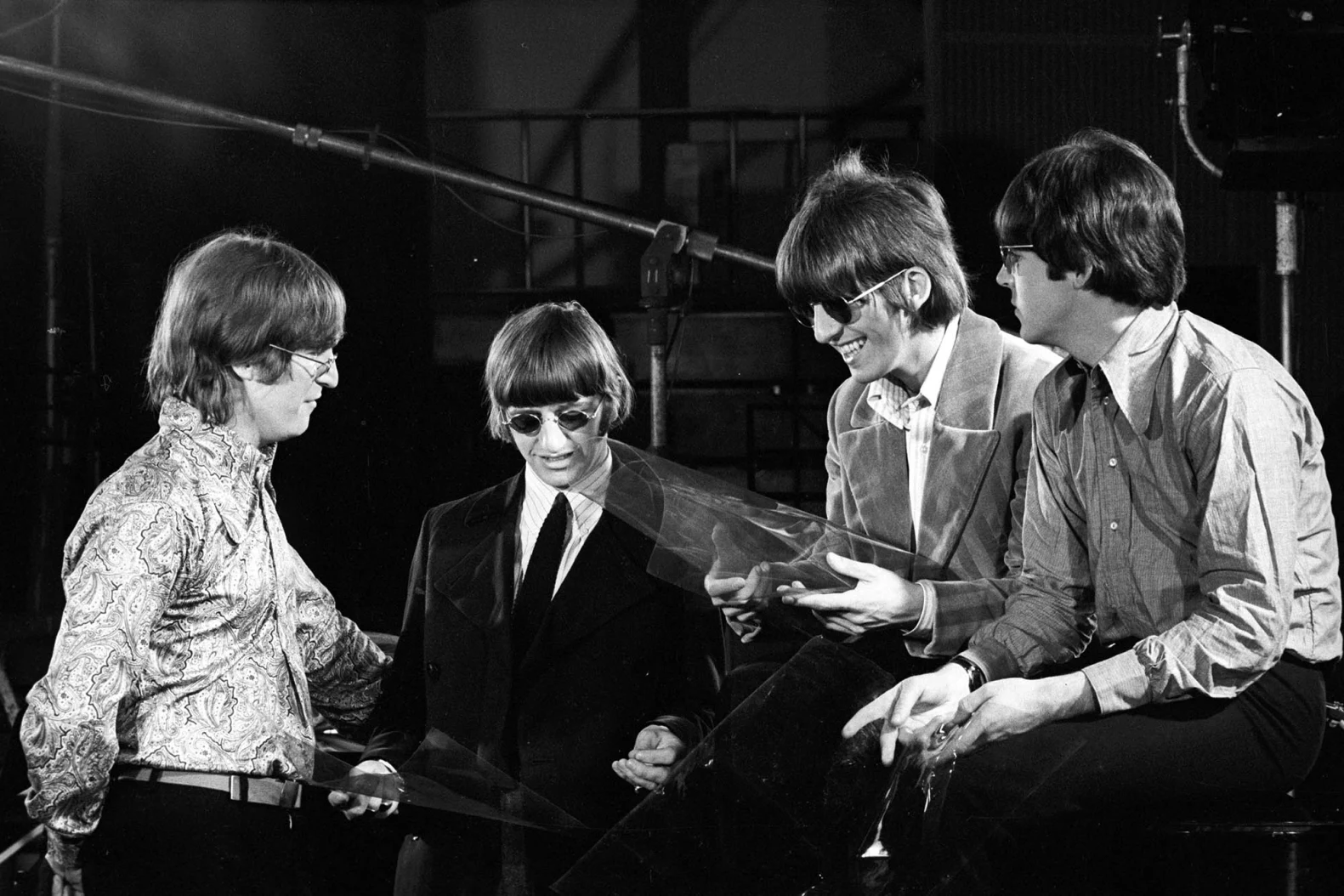
IN THE SUMMER of 1966, the Beatles dropped Revolver — an album so far ahead of its time that the world is still catching up with it. It’s the moptops mutating at warp speed, outgrowing all their former incarnations. Paul McCartney is exploring avant-garde art and music. John Lennon is reading The Tibetan Book of the Dead. George Harrison is studying sitar and Indian mysticism. Ringo Starr has installed a pub in his basement. They’re ready to shock the world — and themselves — with their masterpiece. The result: Revolver, routinely acclaimed as the greatest rock album ever made, by the Beatles or anyone else.
Except the world hasn’t heard it yet. Because in 2022 there’s more to Revolver than we ever knew. Over a few summer days in Abbey Road, the legendary London studio the Beatles called home, Rolling Stone gets a one-on-one exclusive tour of the brand-new Revolver, as good-day sunshine streams through the windows. Producer Giles Martin, son of the band’s wizardly producer George Martin, spins unheard outtakes from the sessions, along with the revealing new mix of the Beatles’ most wildly experimental album.
It’s the one where the lads set out to remake themselves from scratch, trying psychedelia, chamber music, Indian raga, Memphis soul. As Giles Martin says, “Revolver is an album where you could listen to each song and go, ‘Oh, this is the direction they’re going to go in next.’ And be wrong every single time. The Beatles are all in the same zone, coming of age. But it’s four individual members, with four eclectic styles, all willing to surf the same wave. And that’s what this album’s about. It’s about that ‘What have you got? How crazy is it? Well, I can out-crazy you.’”
This Revolver is full of fresh surprises. For one thing, you wouldn’t expect one of the deepest emotional revelations to be ‘Yellow Submarine.’ The world thinks of this as the kiddie song they dashed off for Ringo. But John’s home demo shows how it began as a melancholy acoustic ballad, evoking Plastic Ono Band. The idea that John’s sad confession got reworked into Ringo belting the world’s favorite kiddie singalong — that’s the whole Revolver journey right there. Who else could take a simple song idea through so many evolutions, only for it to end up so perfectly right? Only the Beatles.
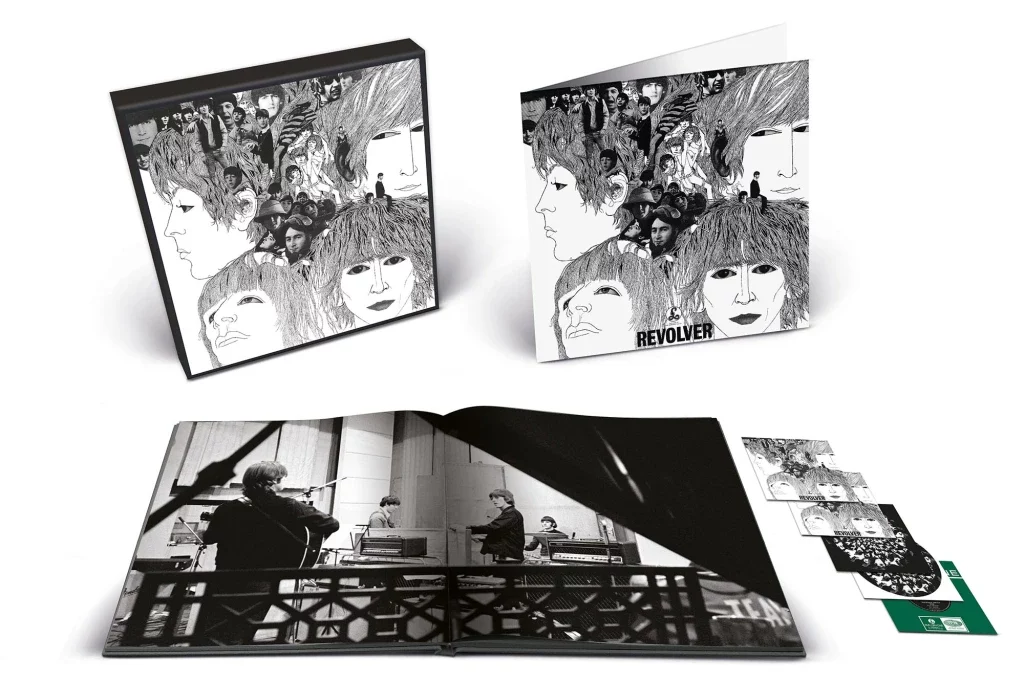
The new Revolver drops on Oct. 28, from Apple Corps Ltd./Capitol/Ume, following the previous deluxe editions that have redefined the Beatles’ lore in recent years — Sgt. Pepper in 2017, the White Album in 2018, Abbey Road in 2019, Let It Be and the Get Back film last year. The new stereo and Dolby Atmos mixes of ‘Taxman‘ drop today. As you can hear, the sound gets a boom from the audio “de-mixing” technology developed by Peter Jackson’s team for his historic Get Back documentary.
The Super Deluxe Edition has 63 tracks in all, with the original album in stereo, mono, on Dolby Atmos, plus session outtakes, on five CDs, four vinyl LPs, and a seven-inch EP of the ‘Paperback Writer”/“Rain’ EP, both sides of the standalone single cut during Revolver. There’s also a 100-page hardbound book of photos and essays by McCartney (“all in all, not a bad album”), Giles Martin, cover artist Klaus Voormann, hip-hop legend Questlove, and historian Kevin Howlett. The Standard Edition has the original 14-track album on CD, vinyl, and digital.
The Beatles’ confidence — never a problem for these four lads — was exploding on Revolver, as well as their competitive spirit. In June 1966, before anyone even heard their new ‘Tomorrow Never Knows,’ Paul told the NME, “We did it because I, for one, am sick of doing sounds that people can claim to have heard before.” (You have to love the Paul-ness of that “I, for one.”) Their friendship had mysteriously gotten even closer — they were tapped into their own communal wavelength, and everyone around them could sense it. But their experimental spirit got contagious. Their 18-year-old engineer Geoff Emerick transformed their sound by stuffing a sweater in Ringo’s bass drum. Producer George Martin kept shattering the limits of studio recording on a day-to-day basis — a ‘Taxman’ here, an ‘Eleanor Rigby’ there, an occasional ‘Love You To.’
Everything about the music asserts the Fabs had grown up. As Martin says, “When Paul sat with me and listened to it, he said, ‘This is the record that is four individuals collaborating.’ It’s the decline of Beatlemania. ‘Phony Beatlemania has bitten the dust,’ as the Clash once said. They’re no longer a four-headed beast on Revolver. They have their different styles. But no matter what they try, they’re still the Beatles. There’s not even a thought of a world outside of the Beatles. There’s no women in their lives, as close as they are to each other. They’re in bed thoroughly, and they’re looking forward to being in bed together. They’ve come off tour, and they want to make great records.”
It was an abrupt mood change for Martin after Get Back. “When I listened to the Revolver outtakes, after having done Get Back, I listened to the outtakes, I thought, ‘Oh, this is actually the real fun.’ On Get Back, they’re trying to get this feeling, get the breath of fresh air, whereas in Revolver it’s just the air they breathe. This is just endless enthusiasm. There’s no post-apocalyptic vision. There hasn’t been a bust-up and they haven’t got back together, nor have they walked out yet.”
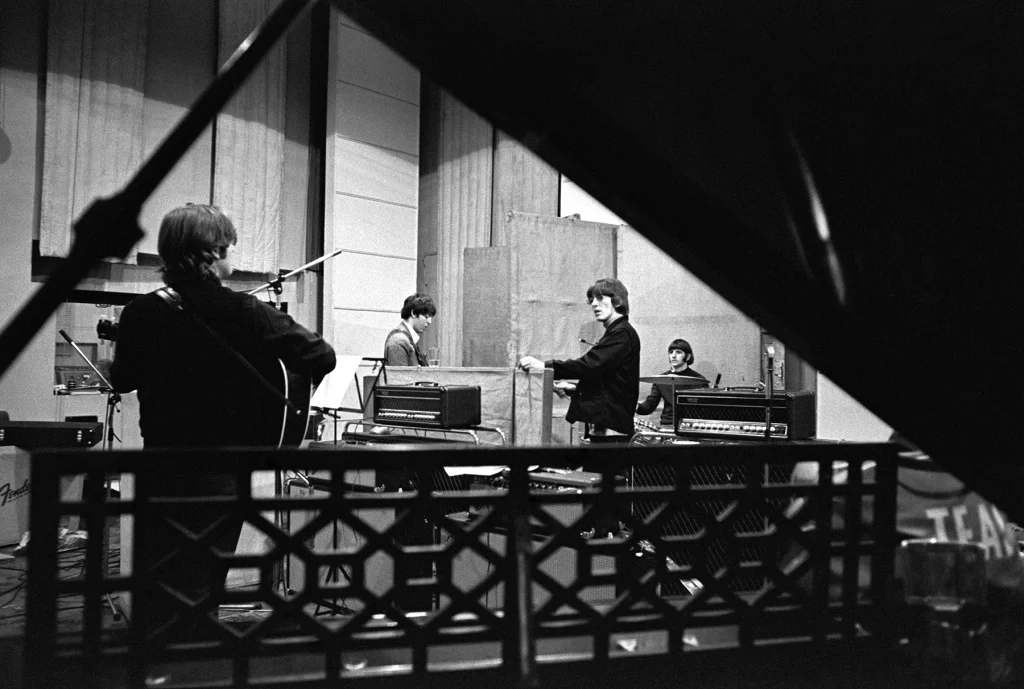
The lads argue, as in the outtake where they tease Harrison over how long he takes to think of song titles. “But it’s funny that this is such a friendly argument, compared to how it would be a couple years later,” Martin says. “The apple hasn’t been bitten into yet.”
It’s also the Beatles closing the door on their road days. “You wonder how much of Revolver comes with the frustration of touring?” Martin asks. “They’re escaping to the studios from this crazy peak of Beatlemania, saying ‘Let’s just find a different world to go to, to get as far away as possible.’ That’s why John said he wants to sing ‘Tomorrow Never Knows’ on a mountain top. He wanted to be as far away from being on a stage as possible.”
The Fabs were tired of racing to quickie live gigs, with no room to explore their new music onstage. Their summer U.S. tour was their last ever, plagued by turmoil and protests. (A Ku Klux Klan rally outside their Memphis show drew 8,000 people.) Martin thinks that’s part of what drew them to Abbey Road. “This was their safe space,” he says. “Probably because of the tension that was increasing with Beatlemania, and everything that was going on in ’66. They were a pop band in, if you like, a bottle of pop. They had been shaken up by the outside world. And it’s almost like the cap is being unscrewed and the effervescence is coming out. There was so much chaos in their outside world, they had to retreat back. That’s where I think that the outside of this building we’re in [Abbey Road] was probably becoming threatening to them. This was a sanctuary where they could spend time. For Sgt. Pepper, they spent twice as long as they did for Revolver.”
The new mix from Giles Martin and Sam Okell goes beyond what they did with previous Deluxe Editions, thanks to the “de-mixing” technology developed by the audio team led by Emile de la Rey at Peter Jackson’s WingNut Films Productions Ltd. It was devised for Get Back, to separate individual Beatle voices from the audio murk of the original film footage. Remember the scene where they cut through the cafeteria clatter to focus on John and Paul’s voices, getting emotional over George, with a microphone planted in a flowerpot? That’s what they do to Ringo’s drum kit. It sounds amazing.
As Martin explains, “There’s no one who’s getting audio even close as to what Peter Jackson’s guys can do. The funny thing, they won’t let anyone else use it—they may do eventually. But Peter’s such a big Beatles fan, he’s willing to help out. I quite like that in a way, that the Beatles are still using technologies that no one else is using. It’s really groundbreaking. The simplest way I can explain it: it’s like you giving me a cake, and then me going back to you about an hour later with flour, eggs, sugar, and all the ingredients to that cake, that all haven’t got any cake mix left on them.”
“Taxman,” for example, was famously recorded with the drums, bass and rhythm guitar all on one track. The new tech alllows separate tracks for Ringo’s kick drum, toms, high-hats, etc. Nothing is being altered, obviously–but now we can hear more of what the lads played in the room that day. You can hear details buried way down in the mix, like the acoustic guitar in ‘For No One,’ or the finger-snaps in ‘Here, There, and Everywhere.’
The book has a typically brilliant essay from Questlove on discovering the band through their call and response with African-American music: fun, rap, soul. When he first heard the Beatles’ albums, he recognized beats sampled on Special Ed or A Tribe Called Quest records. He goes deep on the fascinating Beatles/hip-hop connection, noting “The whole message of ‘Taxman’ might as well be ‘Fuck The Police’.”
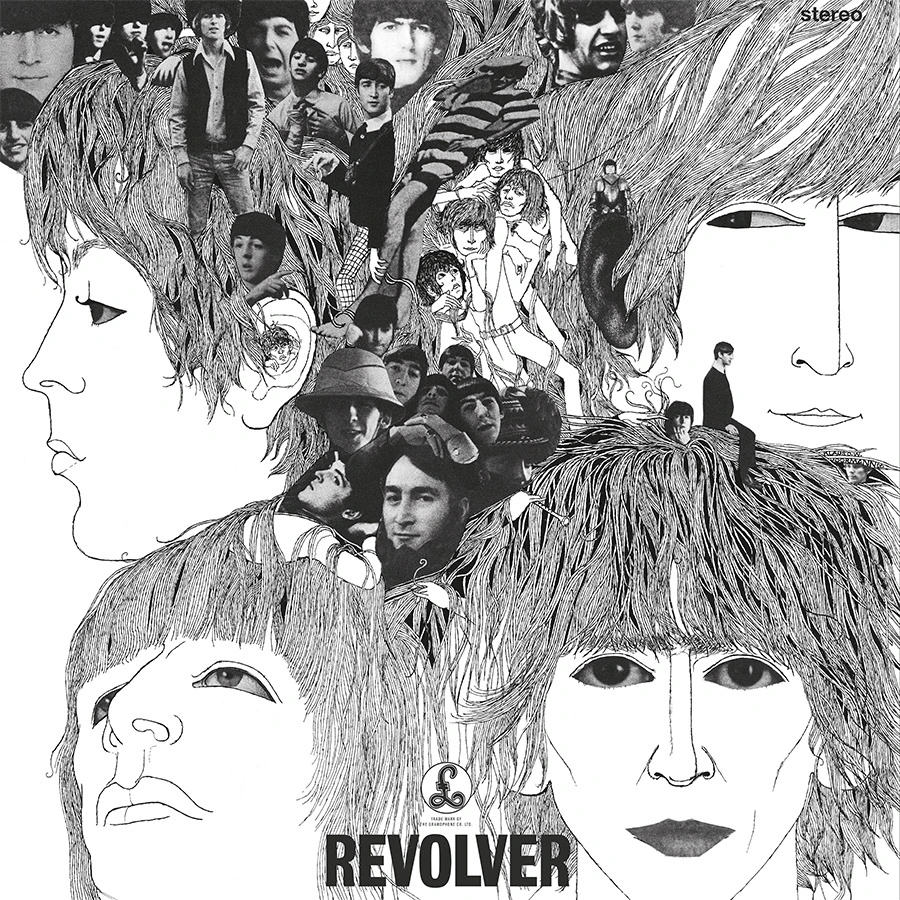
The Beatles carried that creative spirit to every detail of Revolver, right down to the cover art from their old Hamburg friend Klaus Voormann. The book includes an excerpt from his graphic novel, birth of an icon REVOLVER. “They didn’t tell me anything I should do,” Voormann tells Rolling Stone, calling from Munich. “They said, ‘Klaus, come on down to the studio and listen to the music and let’s see what you come up with.” Like everyone, he was stunned by what he heard. “Rubber Soul was already was a really fantastic LP. And I like that photo on there too. But now you suddenly had ‘Tomorrow Never Knows,’ with cymbals splashing and sped-up tracks and backwards guitar and birds fluttering. Really crazy. I was overwhelmed when I heard the tracks and I thought, oh, God, how can I do a cover for that? This is such a giant step into a completely new direction.”
But his cover collage rose to the challenge. “I said, ‘Come on boys, go home and look in your drawers and find any photos you have. Good quality, bad quality—just get me those.” He drew sketches of the band’s faces, full of details like John growing out of George’s hair, or John sitting on his own ear in a medieval knight’s costume. He’s especially proud of his work on John’s face. “John’s got those almond-shaped eyes. And he’s got those nostrils, which are very striking. His nose is just incredible!”
Here’s a breakdown of 8 revelatory moments from the new Revolver Deluxe Edition:
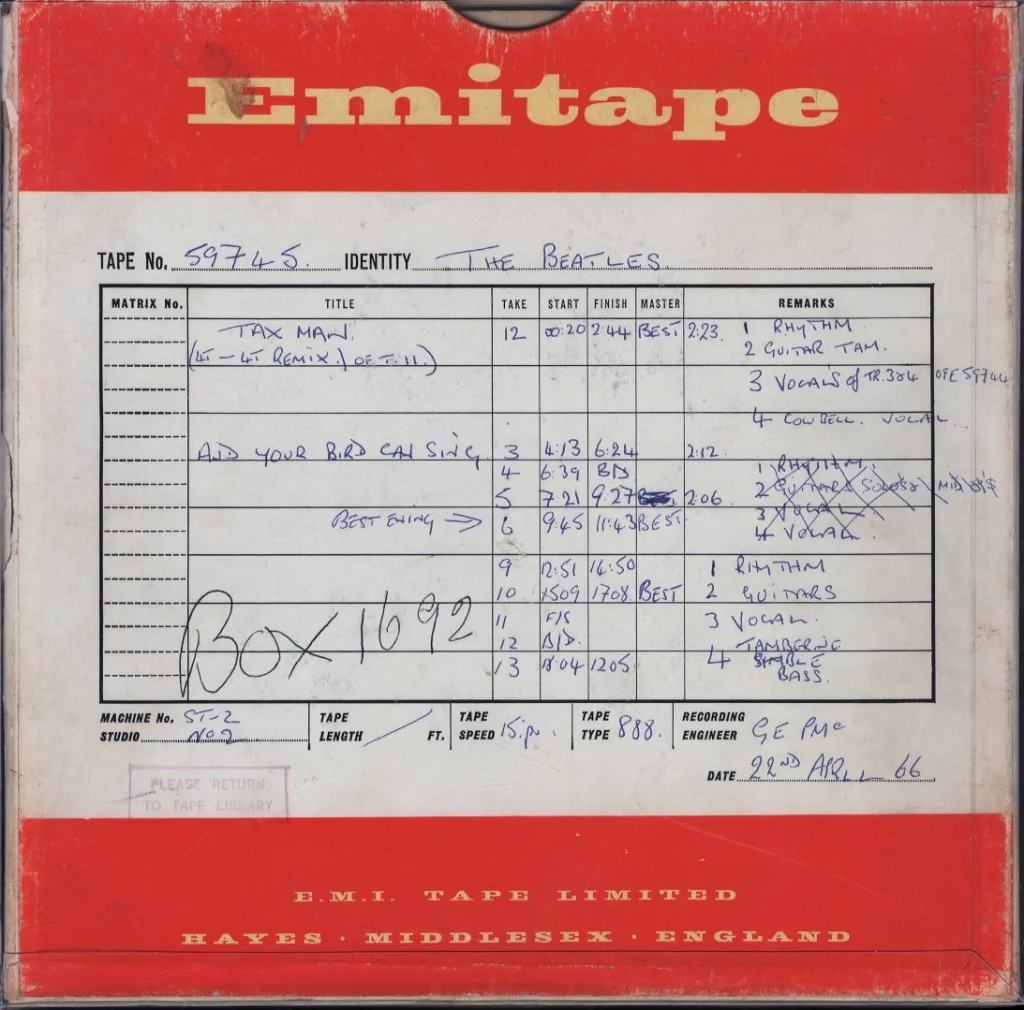
‘Rain’ (Take 5, Actual Speed)
The Beatles got that dreamy psychedelic buzz on the “Paperback Writer” B-side by recording the instrumental track extra-fast, then slowing it down. But there’s no real way to prepare for the shock of hearing them play it live at the original manic speed—Ringo turns into all four Ramones at once. Beatlemaniacs have always marveled at the drums on “Rain”—as he once said, “I know me and my playing, and then there’s ‘Rain.’” Ringo Hive, rise.
‘Yellow Submarine’ (Songwriting Work Tapes 1 & 2)
Brace yourself: Everything we thought we knew about “Yellow Submarine” is wrong. The whole world agrees on the standard origin story—a Paul ditty whipped up fast as an Uncle Ringo kiddie chant, something John grimly tolerated. But don’t be shocked if you catch yourself shedding a tear hearing John sing it. The chorus was Paul, but the verses started out as John in his sad confessional mode, with folkie guitar picking. He sings, “In the place where I was born / No one cared, no one cared / And the name that I was born / No one cared, no one cared.” The demo, on his home tape recorder, is a heart-wrenching childhood memory ballad, halfway between “Julia” and “Strawberry Fields Forever.”
“I had no idea until I started going through the outtakes,” Martin says. “This was a Lennon-McCartney thing. I said to Paul, ‘I always thought this was a song that you wrote and gave to Ringo and that John was like, ‘Oh, bloody ‘Yellow Submarine’’” Not at all. That’s like a Woody Guthrie song. But it’s beautiful in a way, where you realize that there’s so much depth behind it” But still, what a drag to imagine a world without the Ringo version. “When you listen to the outtakes, even knowing the beauty of that John version, you know why Ringo ended up singing it,” Martin says. “And it was acutely, let’s face it, the right decision to make.”
‘Eleanor Rigby’ (Speech Before Take 4)
George Martin rehearses the classical musicians for “Eleanor Rigby,” translating between them and Paul. They ask Paul whether to use vibrato on the strings, but Paul defers to Mr. Martin, who decides the vibrato would add the wrong touch of sweetness. “Let’s do it without, then,” he says. “So you only hear the vibrato when you’ve got something to say.” What a perfect proverb of his production philosophy, in one line. Martin always avoided adding anything pointless–which says a lot about how Revolver turned out as great as it did.
‘Love You To’ (Take 7)
George’s sitar-and-tablas hymn takes on a new dimension, with Paul singing a delicate harmony. It adds a bit of lightness to the song, but somehow you can see how they knew lightness didn’t work for this austere song. Working so hard on a harmony part, but then discarding it when it doesn’t fit—the Beatles’ musical wisdom at work.
‘For No One’ (Take 10)
Ringo asks, “What, shall I just keep it straight then? Not do anything else?” Paul urges him, “No, do!” The whole Revolver creative mission in one moment. As you can imagine, hearing the last two surviving Beatle brothers in this piano-and-drums instrumental duet on “For No One” is a massive emotional gut-punch.
‘I Want to Tell You’ (Take 4)
George had a tendency to get stuck on song titles. After writing “Love You To,” he kept calling it “Granny Smith” (after the apple) because he couldn’t think of anything else. “I Want To Tell You” is one of his greatest songs, but it’s pretty damn obvious the title should be the hook “I Want To Tell You.” (And this is the guy who mocked Paul for the title “I’ve Got a Feeling.”) When Mr. Martin asks, “What do you call it, George?” the others crack up. John sneers, “‘Granny Smith, Part Friggin’ Two!’” Even the diplomat Ringo can’t help dropping a hint: “’Tell You,’ that’s a nice one. ‘Tell You.’” Infinite patience, thy name is Ringo.
‘Here, There and Everywhere’ (Take 6)
Macca takes a solo guitar stroll through his love-never-dies valentine, without the others’ breathy harmonies. Somehow, hearing him wing it in this loose version simply confirms that “Here, There, and Everywhere” is the king of all Paul ballads. There is none higher.
‘And Your Bird Can Sing’ (First Version with Giggling & Take 2)
John always dismissed this satirically soulful gem—a typical John move when he scared himself with how nakedly he exposed himself in a song. Anthology 2 already had a version of the much-loved “giggling” take, but this has one version with an alternate duet vocal, and one that’s just hardcore giggles, 144 seconds of John and Paul face to face, the headphones on, howling with laughter into each other’s mouths. Imagine the joy of being half of that duet. It’s a key to how the whole Revolver Deluxe Edition feels.
